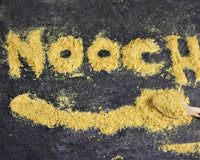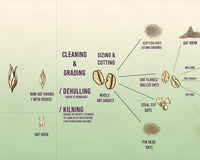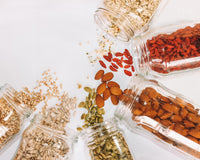Whether you’re a master chef or a beginner, whole grains can initially seem
intimidating when it comes to home cooking. However, in reality whole grains are
surprisingly simple, and so versatile you’ll be using them, without thinking, in no
time. To start with we’ll go through the most popular whole grains, how to prepare
them and some basic recipe ideas.
Quinoa, perfect for salads, soups and stews :
Quinoa is a fluffy and light pseudo grain hailing from South America that makes for a
perfect gluten free alternative to couscous or a healthier alternative to rice.
Quinoa is prepared in a fairly similar way to rice, if anything it is even easier, as you
don’t necessarily need to worry too much about adding water or salt. Much like rice,
the ratio of quinoa to water you choose to use will affect its texture, so you can tailor
it for whatever a particular dish requires. If you choose to add more water, your
quinoa will have an almost mushy texture, and if you choose to add less water you’ll
have a drier final result.
How to prepare quinoa:
1. Combine one cup of quinoa with one cup of water (this will provide the
fluffiest final result) in a pan or rice cooker.
2. Bring the water to a boil, then cover and simmer for 15-20 minutes.
3. Turn off the heat and let the quinoa rest for 10 minutes.
4. Once the quinoa looks translucent, fluff it with a fork and serve!
Quinoa can be quite bland on its own, as it only has a subtle nutty flavour so it is
always best to serve it either with a flavourful dish, or use a strong dressing to really
make the most of it. We recommend this delicious pistachio and quinoa salad as a
starting point.
Oats, great for baking into sweet treats or making the perfect healthy breakfast:
Oats are one of the most versatile whole grains you can have in your pantry, but they
are actually also one of the simplest to cook with. Porridge is perhaps one of the most
typical uses of oats, and there are countless recipes for great healthy versions of it (we
recommend this one) but there are a few things to avoid when making porridge.
Pitfalls to avoid when making porridge:
● Use the correct water to milk ratio - you can easily make your porridge
thicker or thinner by adding more or less milk, but it is important to balance
the two to avoid making either a soupy mess or a chunky disaster.
● Keep the porridge on a medium heat - avoid going any higher otherwise
you’ll run the risk of burning the oats and ruining your pan!
● Make sure to spice it up - adding spices like cinnamon and nutmeg is an
amazing way to make your breakfast more flavourful without ruining its
health benefits and avoiding making a bland final result.
Overnight oats are another delicious and healthy way to start the day, and although
they need more time to prepare they are just as simple, we recommend adding
berries and almonds for an even better final result.
As mentioned above, oats are also a great ingredient in baking, and they can really
help to add both texture and flavour to pretty much any baked dish, so don’t be afraid
to experiment! For a sweet (but healthy) treat we recommend these buckwheat flour
banana muffins with oats.
Brown vs wild rice - superstar carbohydrates:
Brown rice and wild rice are both incredibly healthy carbohydrates, despite their
names they are actually very different, in flavour, texture and preparation. Wild rice is
typically longer and skinnier than brown rice, and most importantly, much chewier.
This makes wild rice more appropriate for dishes where you really want to bulk out
the texture while also keeping it healthy. Brown rice on the other hand is a lot lighter
by comparison, so it is less likely to dominate the meal and won’t alter the texture too
drastically.
How to prepare wild rice
As wild rice is technically a grass rather than a rice it requires a significantly longer
cooking time, so it's best to keep this in mind when cooking with it.
1. Rinse the wild rice thoroughly to remove any excess starch and avoid a sludgy
final result.
2. Using a ratio of around 3.5 cups of boiling water to every 1 cup of wild rice
combine the two in a pan. 3. Bring the rice back down to a simmer for around 50 minutes or until all of the
grains have popped
4. Take the rice off of the heat and leave to rest for 5-10 minutes
5. Fork through the grains with a knob of butter and serve!
While wild rice does have a stronger flavour and more dominant texture than brown
rice it is still best to serve it with something flavourful.
How to prepare brown rice:
Brown rice is a lot more simple, but the cooking times do vary based on the length of
grain, so it’s always best to check the packet if you’re unsure.
1. Rinse the rice thoroughly to remove any excess starch (as you would with wild
rice).
2. Using a ratio of 2:1 water to rice, combine the two with a pinch of salt in a large
pan (although this ratio can be tailored to the specific dish you’re making).
3. Bring the rice to a boil, then reduce to a simmer for thirty minutes or until all
of the water is absorbed.
4. Remove the pan from the heat and leave the rice to stand for ten minutes.
5. Fluff the rice with a fork and serve!
Why not get started cooking whole grains now:
Hopefully by following these tips and suggestions the prospect of incorporating
whole grains into your home cooking seems less daunting. By cooking and eating
healthily you’re bound to notice the difference in no time, and soon you’ll be reaching
for whole grains without a second thought. If you’re ever stumped you can always
check our recipe page for even more advice!






